
魚心亭
Uoshintei
3.42
Mt. Takao Area
「Sushi」
5,000-5,999円
3,000-3,999円
Opening hours: 11:00-14:0017:00-21:00 Open Sundays
Rest time: Monday (Open if Monday is a national holiday)
東京都八王子市東浅川町214
Photos
(20)
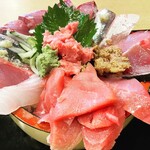

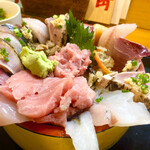
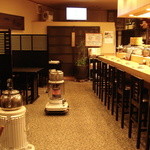
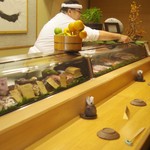
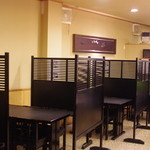

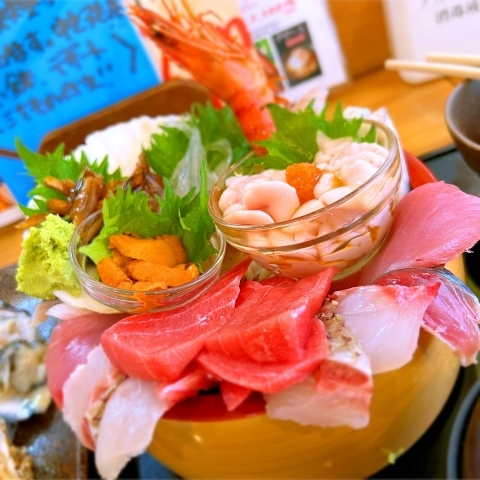
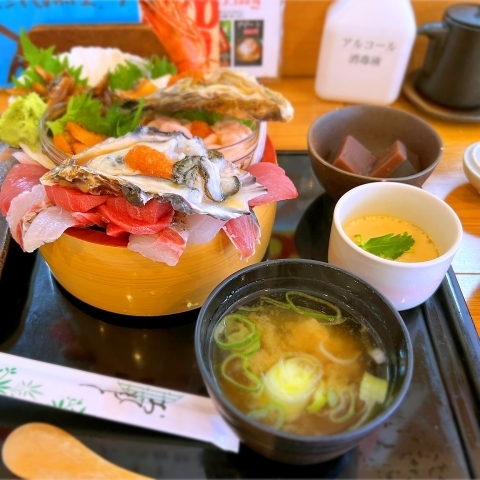
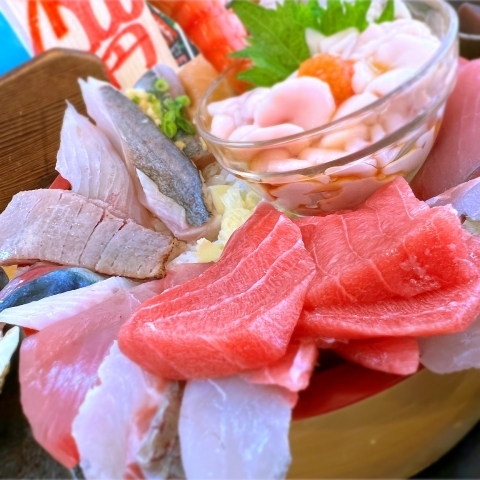
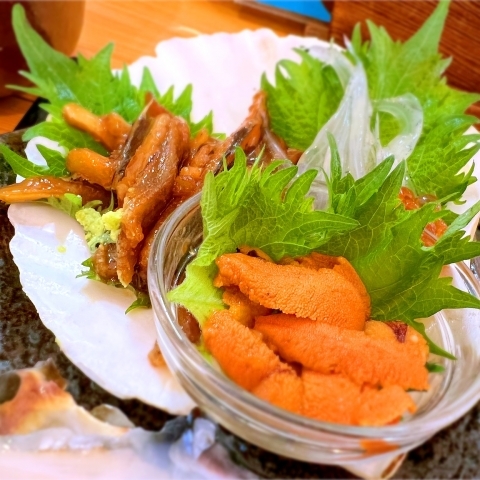
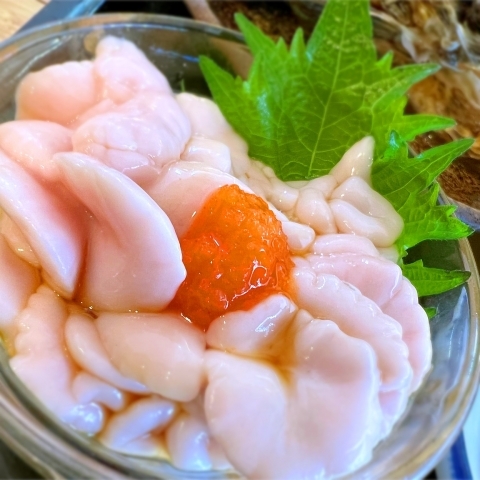
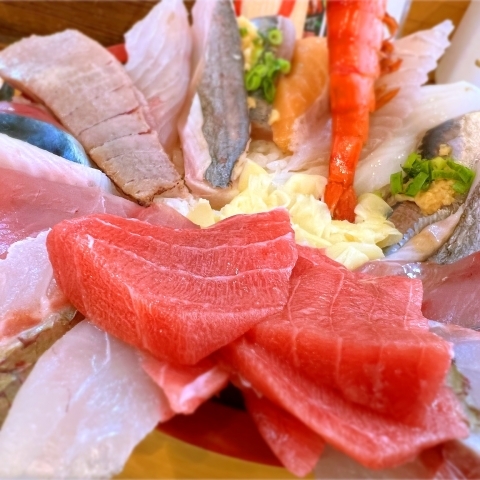

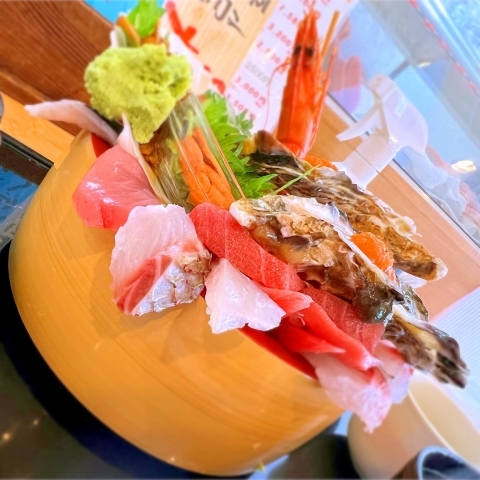
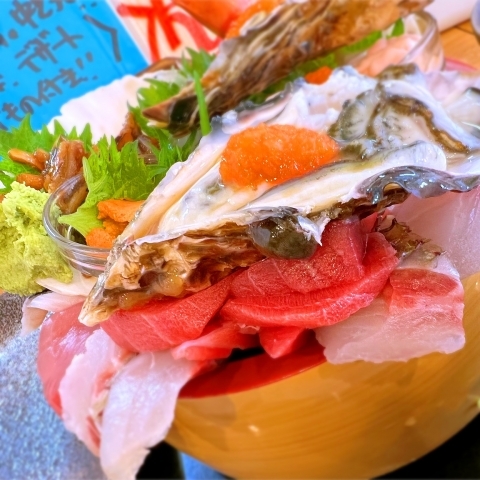
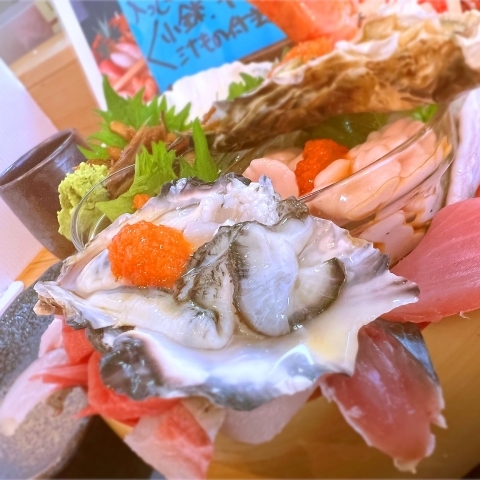
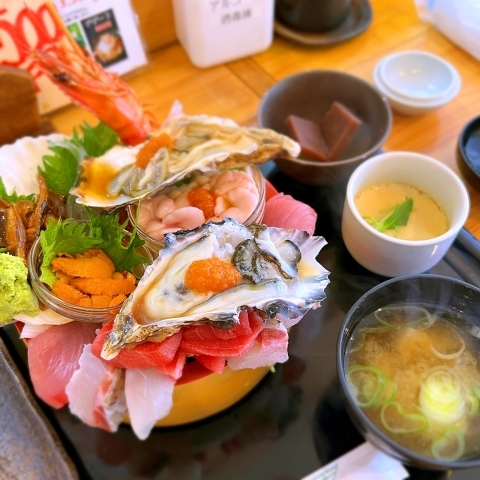
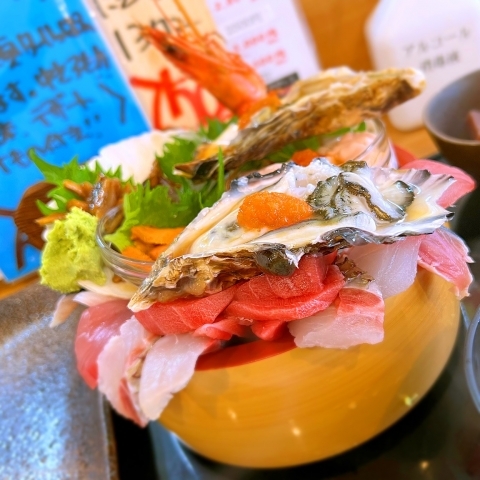
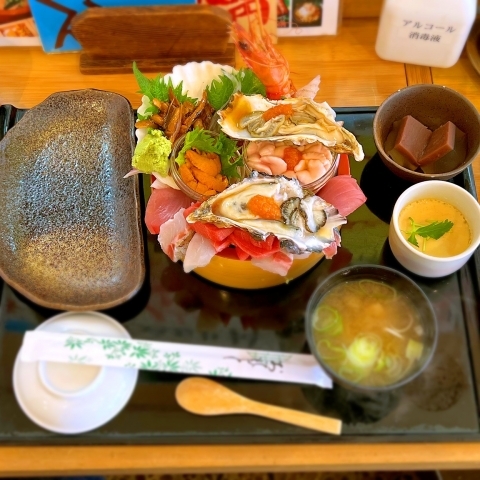
Details
Reservation Info
can be reserved
Payment Method
(credit) card accepted
Number of Seats
30 seats
(The counter has 10 seats. Tables have 20 seats.)
Private Dining Rooms
None
Smoking and Non-Smoking
Smoking is not permitted in all seats. Smoking is prohibited at the counter only during lunch time. The law concerning measures against passive smoking (revised Health Promotion Law) has been in effect since April 1, 2020. Please check with the restaurant before visiting as it may differ from the latest information.
Parking
Yes
7 units
Facilities
Calm space
Drink
Sake available, shochu available, wine available, focus on sake
Dishes
Focus on fish dishes
Comments
(20)
マイペースで独り言
3.40
The name of this dish is "Hon Maguro no Nakatoro Don," so you can be sure that it uses genuine bluefin tuna. The freshness of the fish may be a bit questionable, as it seems to have been thawed from chilled, resulting in some discoloration. The texture is also a bit off, probably due to being completely thawed. Towards the end, the texture and taste of the slices became less appealing, making it quite a challenge to finish. Despite the price of 3500 yen, the dish includes over 10 thick slices of bluefin tuna belly, which seems fair for the quality. A unique feature is the option to get a refill of the seafood bowl's rice, which is not commonly seen. The chef's passion is evident throughout, and there is a boldness in every aspect of the experience.
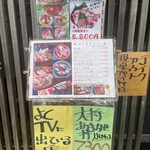
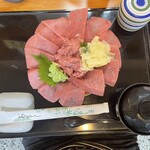

きゅーぽっく
3.20
Sushi restaurant located along the old Koshu Highway in Hachioji and Takao. I came here because a friend recommended it on Facebook. The energetic and lively head chef's calls are fun. The nigiri sushi was good, but I decided to try the famous "Chef's Recommended Bowl" for lunch, which costs 2300 yen. As rumored, it was a huge portion. It included fatty tuna, lean tuna, yellowtail, horse mackerel, sardine, bonito, and minced tuna with green onions. The mackerel was cooked in a sweet sauce and all the toppings were delicious without any fishy taste. It was a bit too much variety for a seafood bowl haha. I recommend trying the Chef's Recommended Bowl at least once, but next time I think I'll go for the nigiri.

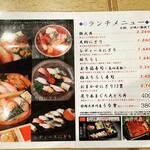
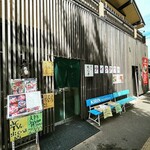
mitteru---
3.80
I visited around 12:30 on a regular day and was able to enter without waiting in line, along with about three other groups of customers. I ordered the recommended "Chef's Special Premium Bowl" for 3,700 yen (tax included). Underneath the oysters, scallop roe, sea urchin, and negitoro, there were thick slices of yellowtail, sea bream, fatty tuna, horse mackerel, and bonito lined up generously. Although the rice portion was sufficient, I was informed that refills were free, so I had a second serving (half portion) with more tuna and negitoro. I have a big appetite, but I think the amount may be challenging for women dining alone, so please be careful. I will definitely be coming back. Thank you for the delicious meal.


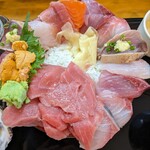
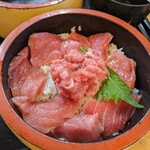
masumomo99.com
5.00
Recently, for lunch, I've been eating a lot of seafood bowls and I think this place is currently the best in my opinion. Last time, I had the "Premium Chef's Special Bowl," so this time I ordered the Chef's Special Bowl. The fish toppings are mainly seasonal fish, so you can rest assured that you can request extra shari if needed. They also have limited-time items, so trying those is also a good idea. I will continue to research other restaurants to see if there is any place better than this one.
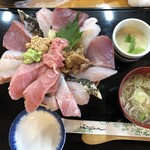
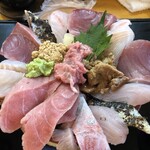
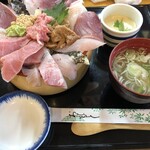
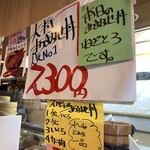
k.oku990
3.30
On February 25, 2023, around 11:25 AM, I visited "Uogintei" in hachioji. This restaurant is known for serving my favorite dish, the "Giant Seafood Bowl." I ordered the "Chef's Choice Bowl" for 2,300 yen, which on that day was the Negitoro. The presentation was beautiful, with thick slices of fish placed elegantly on the rice. The chef even offered me a second serving of rice, which was a first for me. The portion size was generous, perfect for those with a big appetite. Overall, it was a satisfying meal.
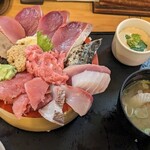
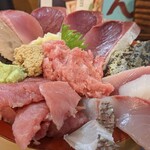
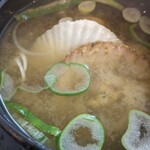
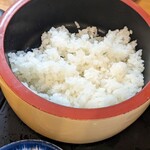
happy eater
3.00
When I checked the reviews on Tabelog, this sushi restaurant seemed to have mixed opinions. The impact of the photo of the chef's choice bowl was so strong that I decided to give it a try. The regular chef's choice bowl was priced at 2300 yen. The premium version was 3700 yen, which includes luxurious toppings like sea urchin, but I didn't want to regret spending that much money if it turned out to be disappointing, so I chose the 2300 yen option. And I realized later that this was the right choice. The dishes were served quite quickly after ordering. In addition to the chef's choice bowl, I also got cold chawanmushi, clear soup, and two-layered kuzumochi with red bean paste. I heard that they intentionally reduce the amount of rice for female customers. However, the appearance was different from the photos I saw on Tabelog. I imagined a mountain of toppings, but it was just slightly more than usual. The tuna, minced tuna, yellowtail, bonito, saury, horse mackerel, salmon, and simmered fish all seemed a bit soft and lacked freshness. Perhaps the rough seas affected the fish supply? As I ate with the rice, the toppings were left over, so I asked for a little more rice. The chawanmushi only had imitation crab as the topping. Hmm, not very impressive. I was quite full, but I learned that quality is more important than quantity.


kikuei2004
4.00
I visited for the second time. The food was average, but as I ate, I couldn't finish all the ingredients, so I added half a portion of rice. It was like a regular portion, and when I transferred the remaining ingredients, it became a proper serving. If you can't eat much, it might be better to order 1/3 less.
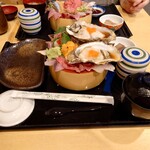


masumomo99.com
5.00
The restaurant I am introducing this time is Uoshintei, located along the gingko tree-lined street from Hachioji area towards Mt. Takao. I had been wanting to visit this place for a while. The highly recommended dish here is the "Chef's Special Donburi". As soon as I entered the restaurant, the chef greeted me with a loud voice. I immediately decided to order the Chef's Special Donburi, but the chef informed me that they also had a Premium Chef's Special Donburi today, which included oysters, sea urchin, scallops, salmon roe, and seasonal fish. Without hesitation, I ordered that. When the seafood bowl arrived, I was amazed by the variety of seafood piled on top. It looked like a treasure chest of seafood. The lunch was luxurious and reasonably priced. The chef's friendly personality also added to the pleasant dining experience, and it was clear that many local customers frequented the place. I highly recommend visiting this restaurant for a special dining experience.
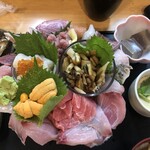
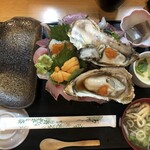

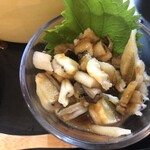
復活KOKOKO
3.50
The seafood bowl I had at "Uogashi Sakaba The Tsukiji" was definitely the biggest meal of my life, but within just one month, I encountered something that far surpassed it. Today, I had some business in Hachioji in the afternoon, and before that, I headed to "Sushi Uogokoro" in Hachioji. I arrived at the restaurant at 10:52 am after a 10-minute walk from Keio Line Sagamihara Station. The restaurant was already open, and I was led to the farthest counter seat by a man who seemed to be the owner. The popular choice is the chef's special bowl, but the recommended option is the Premium Chef's Special Bowl. It's not always available, but it's said to be much more luxurious than the regular chef's special bowl. I had actually heard about this option beforehand, and I had planned to order it if it was available. Without hesitation, I ordered the Premium Chef's Special Bowl for 3,700 yen. Hachioji has many restaurants that are known for their large portions, and they are often featured in the media. Some of the well-known ones include Nagoka-ya for katsudon, Daishintei for Chinese food, Kitano Shokudo, Fukuya, Nanairo for gyudon, and PiaPia at Romespa, among others. Among these, I chose Sushi Uogokoro as my first choice because I thought I could handle it. If it's raw fish instead of carbs or meat, even someone like me who can't eat a lot can handle it, I thought. The restaurant is run by three men, including the owner. The spacious interior of the 30-seat restaurant has a casual yet calm atmosphere of a seafood Japanese restaurant. During my visit, there were only male solo diners and a family of three as other customers. The meal was ready in 7 minutes after ordering. It comes with miso soup with a sea bream eye, cold chawanmushi for the summer, and jelly for dessert. This is impressive. It feels like they just piled it all on. The difference between the chef's special bowl and the Premium Chef's Special Bowl is that it includes fresh oysters, sea urchin, scallops, and salmon roe. In addition, there are tuna, bonito, horse mackerel, sea bream, yellowtail, yellowtail amberjack, squid, simmered anago, negitoro, and salt-grilled red shrimp, among others... How many varieties are included in this? The simmered anago, scallops, and salmon roe are served in small dishes, making it look more like a house of sashimi rather than a seafood bowl. Since I couldn't eat all of it with the rice, I transferred some of the toppings to a separate plate. I started with what seemed to be sea bream, which is a standard move. I think it would be difficult just to pile everything on, but the bonito and horse mackerel are topped with ginger, showing attention to detail in the presentation. If you eat it slowly and savor it, you'll quickly become full. So, without thinking too much, I picked up each item one by one and ate them in order of appearance. Honestly, I didn't have high expectations for the quality and freshness of the fish. The rice was just right, not too vinegary. Since the amount of rice wasn't that much, I managed to finish it, but I was so full. I couldn't stand up straight, and I probably won't want to see fish, even in a painting, for at least the next week. It was mentioned that if you need more rice, they will add it for free. Both "Uogashi Sakaba The Tsukiji" and this restaurant, "Sushi Uogokoro," were restaurants I learned about from media coverage of large portion meals. Seafood bowls are colorful and photogenic, so featuring them as large portions easily attracts attention. Unlike omurice or katsudon, seafood bowls don't require any special skills to make them into large portions. As long as they can charge for it, they can pile on as much as they want. Therefore, I think it won't be long before another large portion seafood bowl that surpasses today's meal comes out. I paid with PayPay, and in an attempt to alleviate the piercing sense of guilt, I decided to walk to JR Takao Station, just a little further than Sagamihara Station. I actually wanted to climb Mt. Takao in my suit attire.
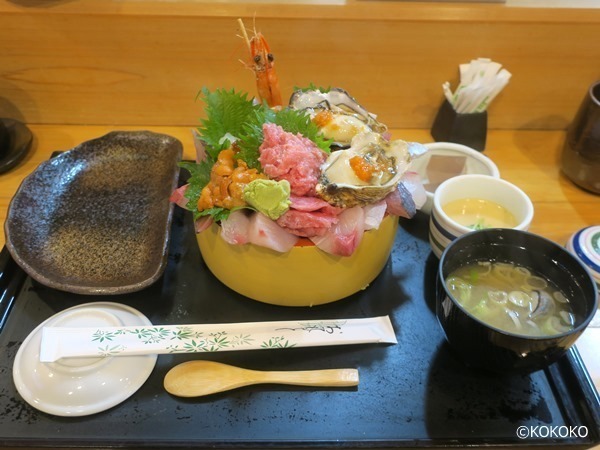
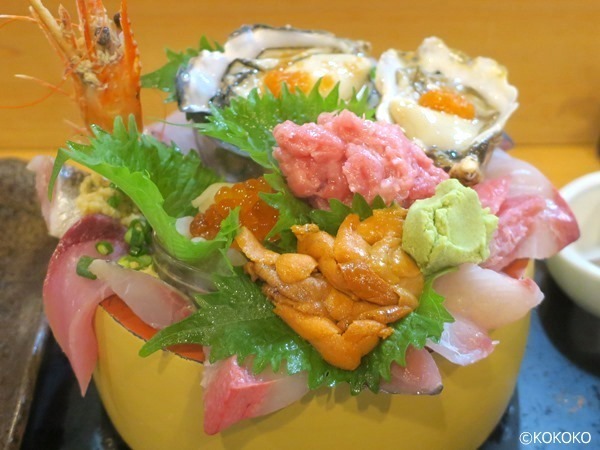
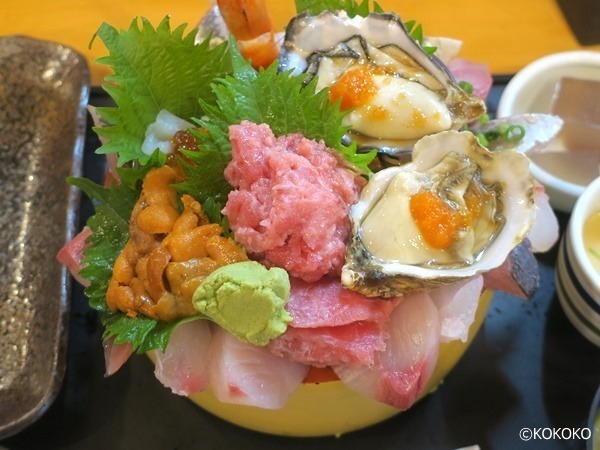
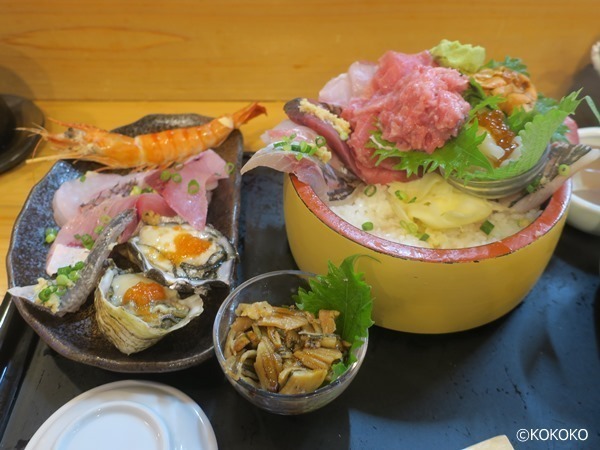
ミートソースとボロネーゼの違いが分からない
3.40
Finally visited Uogintei in Hachioji, Tokyo. I ordered the recommended Premium Omakase Don for 3500 yen and a bottle of beer (Ichiban Shibori, large) for 850 yen. Wow (*゚▽゚*) The bowl was filled with so much fresh fish that you couldn't even see the rice underneath. At first, I tried to count how many different types of fish there were, but I got so caught up in eating that I forgot all about it. The rice was seasoned with vinegar, so no need to worry. With so much fish, I was worried about not eating enough rice, but they kindly offered to give me more. The price may seem a bit luxurious for lunch, but with such generous portions, I left feeling completely satisfied. It was delicious, thank you for the meal! (๑˃̵ᴗ˂̵)#
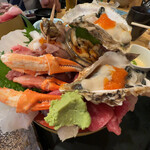

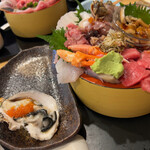

不動産屋さんの登戸探検隊ひでちゃん
3.10
While dining at a restaurant in Tokyo, I overheard about a place in Takao that serves a super mega seafood bowl. I quickly bookmarked the name of the restaurant and decided to visit when I had the chance. Finally, I had the opportunity to visit the restaurant called "Uoginte" in Takao. Upon arrival before lunchtime, I was greeted by the enthusiastic owner and seated at the counter. With a wide variety of menu options, I asked the owner to recommend the most impressive dish, and he suggested the Premium Seafood Bowl. When the dish arrived, I was amazed by the Tower of seafood it presented, including oysters, shirako, sea urchin, and salmon roe. The portion was so large that it felt like a skyscraper of seafood. The dish also came with chawanmushi and miso soup. Despite the overwhelming volume, the owner assured that I could ask for more rice if needed. Overall, the restaurant attracts customers with its generous portions and lively atmosphere, although I personally prefer a better balance between rice and toppings. Thank you for the meal!




台東区大好きマン
3.00
This restaurant is known for its hearty seafood bowls. I ordered the "Premium Chef's Special Bowl" for 3,500 yen (tax included). The bowl was packed with a variety of seafood including 2 fresh oysters, whitefish ponzu, sashimi of clams, as well as tuna, salmon, yellowtail, and more on top. The taste was similar to what you would find at a casual dining chain for lunch - not mind-blowing, but still delicious. The portion size was impressive, but considering the price of 3,500 yen, it felt a bit expensive. If you're looking for a hearty seafood bowl without worrying too much about cost, this place is recommended!
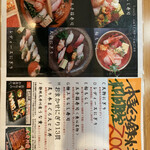
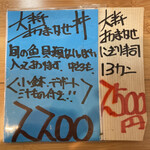
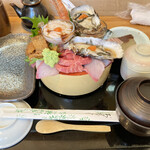
つる.
3.50
One of the restaurants known as the "Big Portion Three Famous Restaurants in Hachioji". This place is famous for its overflowing seafood bowl served in a sushi tub, and has been featured on TV. The three famous restaurants in Hachioji are Uogintei (seafood bowl), Nagaokay (set meal soba), and Taishintei (Chinese cuisine). Located about a 10-minute walk from Sagamihara Station on the Keio Takao Line along the Koshu Highway. It is a bit far from the center of Hachioji, so many tourists visiting from Mount Takao or the Tomei Expressway Takao IC stop by. There are parking spaces for 7 cars behind and next to the restaurant, but the entrances are narrow so parking can be quite challenging. The energetic head chef's customer service may vary, but it is not uncommon for seafood restaurants. I ordered the Chef's Special Bowl for 2200 yen, Ise Ebi Miso Soup for 600 yen, and Chawanmushi for 600 yen. The premium Chef's Special Bowl on this day had fresh oysters and shirako on top, but I don't like oysters with shells on top of sashimi, so I ordered the Chef's Special Bowl. The Chawanmushi is served separately, so it doesn't feel as good of a deal as lunch. The toppings are piled so high that the vinegar rice is not enough. If you want to eat in a balanced way, it is better to order a large portion and stack the tub in two tiers, but if you are not confident that you can finish it, you should not order a large portion. The toppings are thick and fresh, but the cutting technique is not as smooth and satisfying. It feels more like a cheap and delicious restaurant near a fishing port. The Ise Ebi miso soup is rich and flavorful, with a strong salty taste but no meat at all. Rather than going to eat high-quality seafood, it is a place to go when you want to eat a lot of seafood. However, there are not many restaurants that serve such a large amount of fresh seafood at this price. It is definitely a paradise for big eaters.
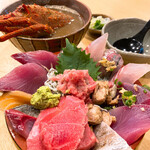
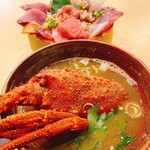

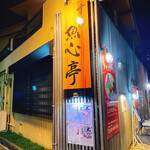
yusuke.a1107
4.50
I was recommended the special "chef's choice" bowl during the state of emergency, and I ordered it. The chef was very friendly, the portion size was satisfying, and the taste was delicious for the price. I noticed in other reviews that if you decline the recommendation, the service may become less friendly, which I can somewhat understand from the way I was recommended the dish... haha. The parking lot is a bit narrow at the entrance, so it's better to use the parking spots not directly beside the restaurant. Depending on where you park, it can be very difficult to get out if larger vehicles are parked nearby.

yum0802
3.00
Today, I finally visited this place that I had been wanting to go to for a while. I got stuck in a huge traffic jam on the Chuo Expressway and arrived at 12:10. The restaurant was full, so I had to put my name down and wait. I was called in quickly and seated at a table where I was served tea and a hot towel. When I tried to order, the owner told me they had a special premium omakase donburi for 3,500 yen today, which is usually 7,000 yen! I was intrigued and decided to go for it. The water was self-serve in paper cups. The donburi arrived in just 10 minutes. The neighboring plate was provided as a dish to use for sharing. As I tried to figure out how to eat it all, the variety of toppings made it difficult to eat the rice and toppings together. I ended up moving some toppings to the sharing plate to make it easier to eat. The toppings included abalone, ikura, sea urchin, medium fatty tuna, yellowtail, horse mackerel, shrimp, tuna belly, crab meat and scallop, yellowtail, salmon, mackerel, sea bream, and squid. There were so many toppings that it seemed endless! I struggled to finish it all and even asked for more rice halfway through. The owner brought me an extra portion of rice, which seemed like almost half of the original amount! After finishing the donburi, I had some fish head soup and chilled chawanmushi. Overall, I was drawn in by the visual appeal of the dish, but the individual toppings were just average. The crab meat was plentiful but watery, and the cutting of the toppings could have been better. The sea urchin and tuna belly were delicious though. The owner was very energetic, and the restaurant seems to be known for its large portions. Perhaps it would have been better with some alcohol... Thank you for the meal.
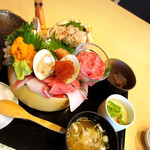
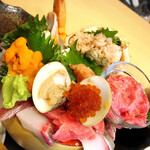
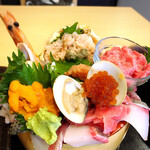

もりちゃんだぞ
3.70
Uo-shinte ikebukuro
I was curious about Uo-shinte in Hachioji, which is famous for its large portions. Finally, I visited for the first time! I ordered the recommended premium assorted seafood bowl. The rice was refillable and the dish arrived in about 10 minutes. It was packed with various toppings - oysters, sea urchin, firefly squid, clams, fatty tuna, medium fatty tuna, lean tuna, seared tuna, sea bream, amberjack, squid, salmon roe, shrimp, and a few others I couldn't identify. Just as expected, it was a huge portion! And they bring the rice refill in the same container. I thought the lunch at 3500 yen was a bit expensive, but considering the variety and amount of seafood, I was satisfied with the seafood bowl. Each piece of seafood was large and delicious - the oysters and sea urchin were especially good. I definitely want to go back and eat there again! Don't let the coronavirus win!
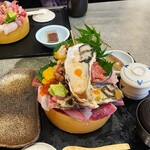
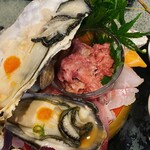
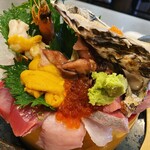
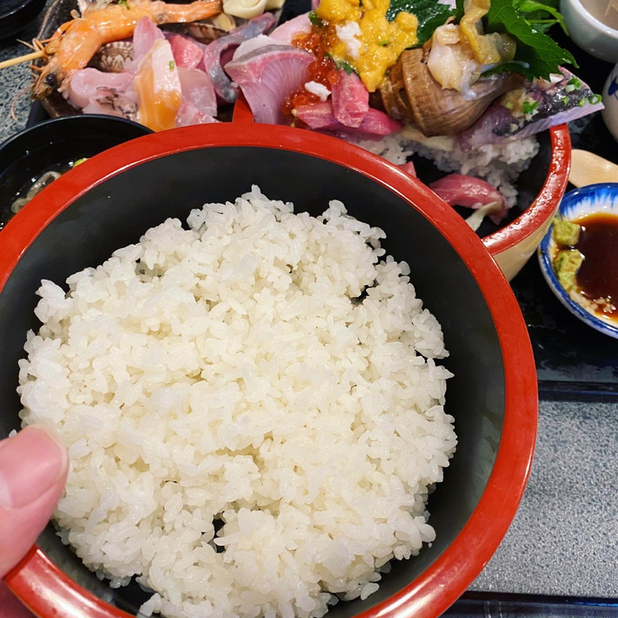
manatan1014
3.80
I visited this restaurant on the way back from Mount Takao. The price is a bit high, but when the dishes arrived, I was surprised by the huge amount of food! They told me, "If you need more rice, just let us know," but the portion of rice was already huge! The seafood was fresh and the rice was plentiful! I was completely satisfied and full in no time. I will definitely visit again.
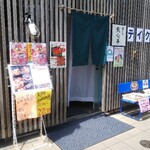

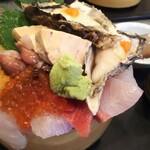
Robert De Niro
4.10
Exited the Chuo Expressway at Takaoyama IC and arrived in Hachioji City, Tokyo this morning. Finished my errands in the morning and now it's time for lunch. Searched for restaurants around JR Takao Station on Tabelog and found a sushi restaurant with a rating of 3.40. Found the restaurant along Route 20 and parked my car in the adjacent parking lot. Entered the restaurant at 11:40 and sat at the counter. There was a huge Hokkaido bowl with plenty of seafood and other options such as rice bowls, sushi, and various menu items to choose from. The chef recommended their most popular dish, the Chef's Special Bowl priced at 2,200 yen. While waiting for the dish, checked the reviews on Tabelog. As I read through, I started to sweat nervously. Oh no, this place is known for its large portions... The chef, with a loud voice and friendly demeanor, served me the Chef's Special Bowl. The toppings included tuna (medium fatty), sea bream, flounder, horse mackerel, yellowtail, cherry salmon, globefish, negitoro, simmered tuna, edamame, and more. The pieces were thick and the portions were huge. Even after eating, it seemed like it never ended. Despite that, the chef said, "If you need more rice, just let me know, I'll add more." In addition to the bowl, the meal came with miso soup, chawanmushi, and dessert. The presentation was a bit wild, but for a lunch priced at 2,200 yen, it was surprising. I couldn't make it to dessert, but I managed to finish everything else. Thank you for the meal. I've definitely overeaten. I don't need any more fish this week.
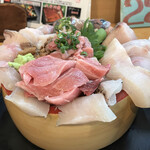

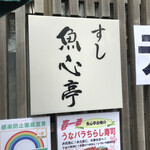
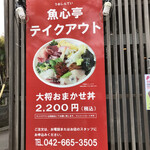
カイテキZA
3.20
This was my first visit. I had the chef's recommended special assorted bowl. Even when I transferred the toppings like turban shell, oyster, and sea urchin to a separate plate, the presentation was still impressive! I started with the medium fatty tuna, and it was amazing. The amount of medium fatty tuna was incredible. Uni, salmon roe, oyster, turban shell, sea urchin, medium fatty tuna, firefly squid, white fish, red snapper, yellowtail, mackerel, horse mackerel, shrimp, squid, etc. Rice refills were free, but I declined. Thank you for the delicious meal. It was worth it for only 3,500 yen including tax. I am grateful to the friendly chef.
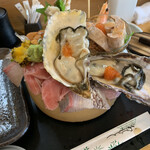

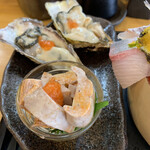
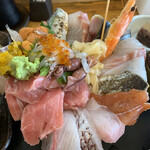
ばぁば。
2.60
I ordered the Chef's choice bowl for 2,200 yen, which was very enjoyable just like the previous times. The bowl changes depending on the day's ingredients. This time, the portion of the toppings seemed to be about half of what it used to be (although it was still a decent amount compared to other places), and the rice was mushy and sour, making it hard to eat. I could only manage to take a few bites. Hopefully, this was just a one-time thing. The quality of the toppings prepared by the chef is still good. This year has been full of challenges indeed. Atmosphere and cleanliness of the restaurant: ★★★☆☆, Personal taste preference: ★☆☆☆☆, Presentation and appearance: ★★☆☆☆, Cost-effectiveness: ★★☆☆☆, Personal expectation for the next visit: ★★★☆☆
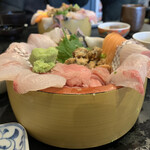
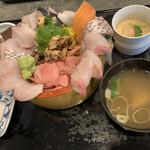
Email Login